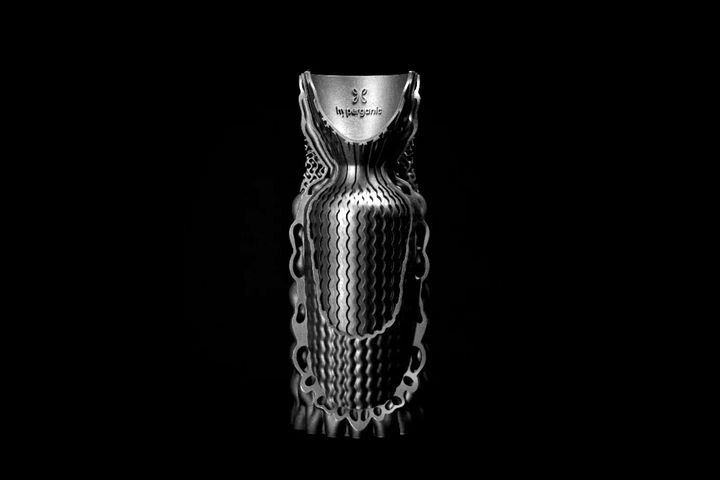3D printed rocket engine concept. (Image courtesy of Hyperganic.)
Hyperganic 3D printed a rocket engine prototype that was designed using an Excel spreadsheet and a novel algorithm.
The rocket engine is a proof-of-concept model for demonstrating Hyperganic’s unique approach to design. It was printed on an EOS M400-4 3D printer from Inconel 718, a nickel chromium material. According to Hyperganic CEO Lin Kayser, “Different strategies were used in various areas of the object to gradually change the material properties.” He also noted that “Hyperganic technology allows you to store process properties for every voxel in space.
Rocket engines are manufactured from individual parts like those that make up the combustion chamber, for example. Cooling channels in a rocket engine circulate the fuel to keep it from overheating and are welded to the combustion chamber. Hyperganic’s cooling channels and combustion chamber are all printed as one part.
This may make replacing parts or improving individual components to the rocket engine assembly more difficult in the traditional product design lifecycle. In terms of replaceability, printing a rocket engine as one part does not seem like an efficient notion.
Hyperganic’s design was created with the help of a rocket scientist and the approach is relatively novel. Hyperganic tasked the rocket scientist with expressing the shape of the rocket engine parts as formulas stored in an Excel spreadsheet. These formulas were formatted to feed Hyperganic’s algorithm information. The algorithm then used the data to “grow” the geometry of the final model from the ground up, as though it were the seed of a tree.
The algorithm “grew” the model of the rocket engine within specific performance parameters determined from the beginning. The resulting model of a rocket engine was able to be printed in different material densities, which is an unusual modality for rocket design. The goal was to reduce weight in areas that could afford it, and the material density ranges from very solid in the middle of the model to more porous near the its exterior.
Read more at ENGINEERING.com

